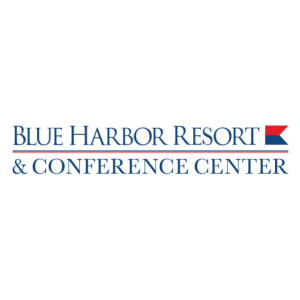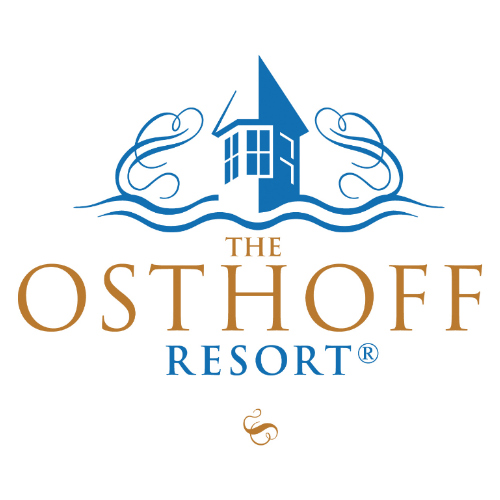Increased Inclusivity Demands More of Events
07/16/2024
By Ronnie Wendt
In the corporate events industry, diversity, equity and inclusion (DEI) have become vital factors that drive innovation, improve brand reputation and create a sense of belonging among attendees.
Shari Weber, owner of Lake Country Event Planning in Oconomowoc, says the demand for inclusive events has exploded. Today, she says 100% of her clients “want inclusivity to be considered to ensure attendees feel comfortable and safe at their events.”
The pandemic prompted people to be more inclusive and mindful of others’ circumstances when organizing gatherings, says Kyra Canty, event coordinator at Paragon Events. She shares that the firm has seen an uptick in inclusivity queries from existing and new clients since the pandemic ended.
What can planners do to make gathering feel more inclusive? Both Weber and Canty say adding inclusive spaces, diverse content, networking opportunities, accessibility accommodations and cultural elements can make events more inclusive.
A Diverse Planning Team Drives Inclusivity from the Start
To increase the likelihood of incorporating diverse perspectives and ideas, Weber suggests establishing a diverse planning committee. “Define and set diversity goals to develop a diverse planning team,” she says. “Develop inclusive job descriptions, broaden your outreach and target candidates from under- represented groups.”
Megan Henshall, who oversees global events strategy for Google, says “Next, train the planning team.” She says Google employs training workshops to address topics like unconscious bias and inclusive language, with a focus on leading by example, showcasing inclusive behaviors and active listening. “By prioritizing education, modeling inclusive behavior and fostering open communication, teams can work together to create a welcoming and inclusive event,” she says.
Weber recommends using pre-event surveys and registration forms to collect information on specialized needs. “These things help gather basic demographics such as gender, race, age, education, cultural and religious backgrounds and more,” she explains.
During the registration process, gather extensive information on dietary needs, hotel room accommodations, hearing and sight limitations and transportation requirements to fully understand everyone’s needs.
Henshall suggests asking potential attendees about hidden needs. “Ask questions like, ‘Do you need any accommodations associated with neurodiversity or mental health?’” she suggests. “That way, people can tell you things like ‘I need at least an hour break in a full day of meetings.’ Or, ‘I need a quiet place where I can regroup.’”
Also, inquire about their reasons for attending. Henshall recommends asking questions such as: Is there something you’d really like to see at this event? Is there something you’d really want to accomplish here?
“These questions can tell you a lot about why they are coming,” she says. “It’s a wonderful way to curate and personalize what you offer to meet those needs. When you check those boxes for them, they will come back again and again.”
Set the Tone with Diverse Program Content
Inclusivity starts with creating diverse programming that caters to a variety of audiences, according to Weber. “This sets the tone before anyone arrives for the event,” she says.
Canty recommends partnering with a web developer specializing in Americans With Disabilities Act (ADA) compliance to develop an inclusive event website. “We try to supply as much information as possible up front, so attendees can make the best decisions for themselves for their best experience,” she says. “For example, when we select activities, our team personally completes each activity from start to finish so we can add details regarding the physical activity level to the site.”
Since the team has completed all the activities, they can classify each activity as low, medium or high physical activity, she says. Detailing this on the site helps guests choose activities suited to their preferences and needs. “We also include options at each level for inclusiveness,” she adds.
Weber says she favors inclusive ice breakers over physical activities that may be uncomfortable for some people. “Activities that are always a hit include fun facts about attendees, virtual scavenger hunts or short storytelling sessions,” she says. “Small group discussions are also popular. Interactive workshops also can cater to diverse interests and learning styles, but should be led by diverse facilitators.”
Canty suggests posting agendas early to inform attendees about what to expect and available accommodations. Provide attendees with information about dress code, code of conduct, accessibility, session details, activities and hotel or transportation options. Create detailed guides for each event, including descriptions and pictures of sessions and activities.
“We also leave comment boxes for attendees to fill out if they have any specific needs for their experience, such as listening devices, ADA accommodations, transportation needs or dietary considerations,” she says.
Intentionally Opt for Presenters with Diverse Backgrounds
Diversity also encompasses selecting presenters and speakers from diverse backgrounds. Weber explains, “You want to ensure you are not heavily weighted with one gender and one race.”
Intentional planning is necessary to organize a diverse range of presenters and content. “Set diversity goals for your speaker lineup, ensuring representations across various dimensions,” she says. “Call for proposals and encourage submissions from a wide range of voices and perspectives.”
Weber suggests creating criteria that recognizes diverse experiences and expertise. “This could include not just credentialed speakers, but those who have lived experiences and have unique viewpoints,” she adds.
Paragon collaborates with clients to establish specific diversity objectives for speakers and presenters. The company then leans on the diversity of its planning team and the client’s team to develop varied experiences.
Even font selection should be considered with digital and print guides, she adds. “There are a lot of fonts that are easier for those with dyslexia or dyscalculia to read,” she explains. “Color is also important. Stark white backgrounds are not good for anyone’s eyes or brains, but are incredibly challenging for dyslexic communities. Choose a soft cream or pastel yellow background for print and digital content.”
Share presentation materials with attendees after the event. “It’s very easy to get distracted in a shared physical space,” Henshall says. “It also can be hard for some people to retain information in the moment. Providing the content presented lets attendees reflect on it post-event.”
Remember to provide multiple ways to engage, Canty stresses. “This helps people comfortably speak in ways that suit their preferences,” she says. “Different communication channels like email, phone, video calls and in-person meetings cater to varied comfort levels.”
Offer a Range of Catering Options & Experiences
Plan to capture attendee dietary needs up front. “This helps us accommodate unique needs and ensure full inclusiveness for everyone,” Canty says.
Canty recalls a recent event that offered a cooking class. “We had an attendee who was gluten-free who wanted to experience the cooking class,” she says. “We worked with the chef to review the menu details and shared specifics with this guest, so she was fully aware of the ingredients being used. We then worked with the chef to find replacement items to ensure this attendee had a great experience.”
Canty advises offering a range of food to accommodate attendees with different dietary needs, including vegetarian, vegan and gluten-free options. Clearly- labeled ingredients help those with food allergies or sensitivities train the wait staff to understand potential allergens and risks.
Including dishes from diverse backgrounds can emphasize cultural diversity as well, according to Canty.
“Celebrating culinary traditions and getting feedback from every event lets us continuously improve the food experience and ensure food inclusivity for all attendees regardless of dietary restrictions or preferences,” she says.
Weber recommends sourcing food locally, sustainably and ethically to address attendees who value environmental and social responsibility. She also advises considering the timing of food-related events, including cultural or religious fasting periods, and offering food options that fit fasting schedules. For example, during Ramadan, provide pre-dawn or post-sunset meals, she says.
Set Up Safe Spaces
Accommodating disabilities is key for every event, according to Weber. “A successful event makes sure all attendees, regardless of their physical abilities, can fully participate and engage,” she says.
Weber cites three things to keep in mind while considering accessibility:
- Physical Accessibility. Consider accessibility in all facets of planning, from venue selection to seating arrangements, signage and parking.
- Communication Accessibility. Meet the needs of the hearing and sight impaired by offering listening devices, sign language interpreters, captioning, large print and braille.
- Staff Training. Train event staff and volunteers on accessibility issues and ho w to assist attendees with diverse needs respectfully and effectively. Make sure all emergency procedures consider the needs of individuals with disabilities.
By integrating accessibility into all aspects of event planning, Weber says planners not only comply with legal requirements, but also show a genuine commitment to inclusivity. “This ensures all participants, regardless of their abilities, can fully engage and have a positive experience,” she says.
When planning for disabilities, Henshall encourages planners not to overlook disabilities that are not visible, such as neurodiversity, mental health needs or dyslexia. She also highlights the need to account for individuals who require spaces to regroup and gather their thoughts.
“We call these areas resilient spaces,” she says. “They don’t have to look a particular way or be overly fancy. They are spaces that are purposefully built and only used for moments of restoration and regulation for anyone who needs it.”
Some examples may be a lounge space, a conference room with lowered lighting or a quiet room.
“Every time we’ve deployed those spaces, from leadership conferences to trade sho ws, they are always heavily utilized,” she says. “People are so grateful and appreciative of having a space to go to.”
Paragon Events also establishes safe spaces where attendees can seek support or discuss sensitive topics. “By forging partnerships with local community organizations, we are able to broaden outreach and ensure representation,” Canty adds. “When we integrate these approaches, events can become more inclusive, equitable and reflective of the diverse experiences of all attendees.”
Gather Post-Event Feedback
Creating safe mechanisms for providing feedback is an essential element of advocacy, inclusive design and developing a deeper understanding of opportunities or gaps, according to Henshall.
Post-event surveys, suggestion boxes, help desks or an event app are tools that event professionals can utilize to gather feedback after the fact. Ask questions like: Ho w was your overall experience? What changes or accommodations would you like to see at the next event? What are some key opportunities for improvement? How could we have been more supportive of your needs during the event?
Asking these questions enables feedback to become a collaborative learning experience for everyone involved and expedites the journey to diverse solutions that meet everyone’s needs.
Henshall notes that Google’s Neu Project has found that hosting virtual focus groups and live feedback sessions with neurodivergent communities is incredibly helpful and insightful. “We learn something new in every conversation,” she says.
5 Tips for Authentic Cultural Experiences
When planning incentive trips, which are typically held in exclusive travel destinations such as Costa Rica or St. Lucia, Kyra Canty, event coordinator at Paragon Events, likes to include a cultural night.
“At our cultural nights, we work with local artisan vendors to bring a local marketplace to the hotel for attendees to enjoy,” she says. “We also work with local vendors to provide an authentic experience. Year after year, it is most attendees’ favorite party.”
To ensure the success of cultural events, Shari Weber, owner of Lake Country Event Planning, highlights the significance of sensitivity and avoidance of stereotypes. “It requires sensitivity, respect and a genuine understanding of the cultures being represented,” she says.
Weber presents a few ideas to assist planners in organizing a culturally authentic event without offending anyone.
- Collaborate and Engage. Cultivate relationships with individuals from the cultures that will be included. Partner with them to craft an authentic event based on mutual respect.
- Emphasize Education. Offer workshops, talks and panels that dive into the history and meaning of cultural practices.
- Gather Diverse Ideas. Make sure multiple voices from the same culture are part of the planning and represented at the event to avoid monolithic portrayals.
- Cultivate Cultural Sensitivity. Make sure event staff and volunteers understand the importance of respectful representation and how to avoid cultural appropriation.
- Show Respect. Avoid using cultural symbols, attire or practices out of context or as mere decoration. Ensure all cultural elements are presented with proper significance and respect.











